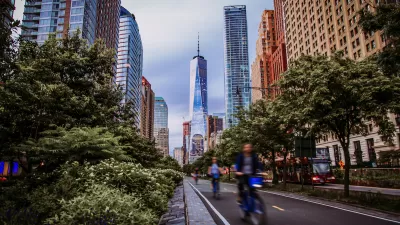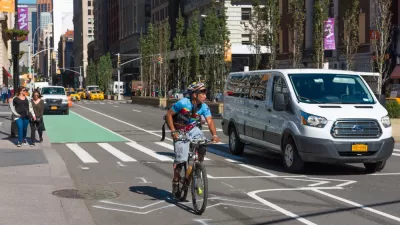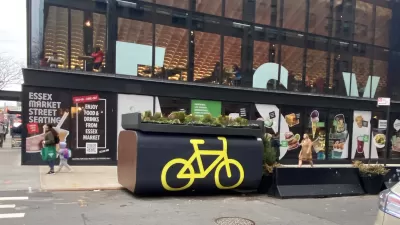Bicycle sharing has exploded in popularity across the United States. Importantly, bikeshare users are likely to wear bicycle helmets while ride.
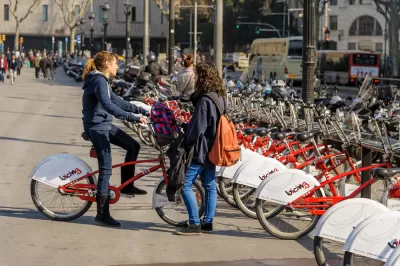
Bicycle sharing has become increasingly popular across the world. More cities are adopting bikeshare schemes, but one of the challenges has been how to encourage people using a bikeshare to also use a helmet to minimize head injury in the event of an accident.
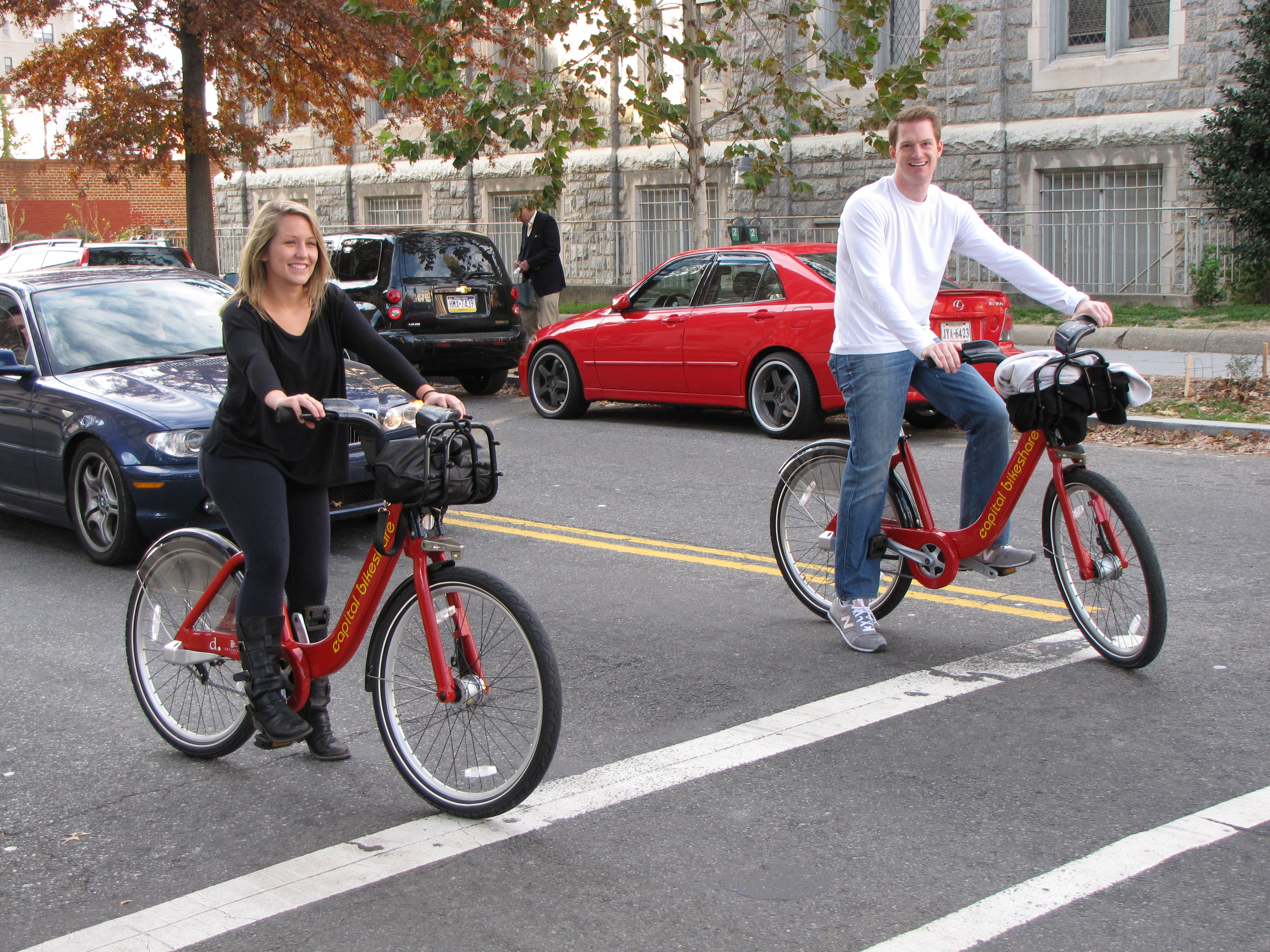
This image is typical of what can been seen in cities across North America, these Capital bikeshare users in Washington, D.C. are not wearing a helmet. Let's face it: as a tourist in a city deciding to explore the city by bikeshare, there is no way you packed a helmet in your luggage. And if you decide to go for a ride at lunch on a nice day with a bikeshare bike, you likely don't have a helmet sitting in your office. As a commuter who regularly uses bikeshare you are more likely to think about using a helmet. But how often do bikeshare users wear a helmet?
My intern Patrick Holland and I have been monitoring helmet usage on the Ohio State University campus, and I was curious to see how our experience compares to other places. I took a look at research undertaken across North America and Europe to see what data has been collected on helmet use. The following table summarizes the portion of bikeshare users wearing helmets and compares this to the helmet use among people using private bicycles.
|
City |
% bikeshare users wearing a helmet |
% of personal bicycle users wearing a helmet |
Helmet Options on BikeShare Website |
|
New York City |
15% 8% |
Not observed Not observed |
|
|
Washington DC |
16% 6% |
33% Not observed |
|
|
Toronto |
33% 21% |
Not observed 52% |
|
|
16% |
64% |
Promotes helmet use | |
|
12% |
51% |
||
|
Columbus, Ohio* |
10% |
28% |
*Preliminary Results based on observations at Ohio State University
While helmet usage rates are low, there are differences in who wears helmets. Females more frequently wear helmets than males across the cities observed. And older riders wear a bicycle helmet more frequently than young riders.

Cities have taken a variety of approaches from mandatory helmet laws, helmet rentals, free helmets, and helmet discounts. Seattle has a mandatory helmet law for riders of all ages. People caught not wearing a helmet can be fined $81. Seattle is offering free rental of helmets with the launch of its Pronto Cycle Share program this fall. I didn't find any studies looking at whether helmet usage in a mandatory helmet city result in higher rates of helmet use. I did find one study that compared cycling related hospitalizations in Canadian jurisdictions that do and do not have helmet laws. Researchers found that helmet legislation was not associated with hospitalization rates. Their conclusions are that policy makers should concentrate on bicycling infrastructure rather than helmet enforcement laws.
While the bikeshare and the city may not require or directly encourage bicycle helmet usage, community members are working to encourage helmet usage. For example, in Montreal a local business offers free helmet rentals. Washington DC ran a pilot program providing helmets in hotels for visitors. Even thought there are efforts to promote helmet usage, the portion of bikeshare users wearing helmets is quite modest.
In Europe, helmet usage is low because traffic speeds are low and bicycle infrastructure is much more prevalent. Is it that bicycle share users feel safer, ride in places with better bicycle infrastructure or something else? Or are bikeshare users willing to take greater risk simply because they do not have easy access to a helmet at the time they wish to ride? I also wonder whether weather is a factor. I've noticed in my own community that helmet usage is greater in winter months compared to summer months. Perhaps because a helmet aids in keeping your head warm in the winter and contributes to sweat and messy hair in the summer. Is vanity a contributing factor? In a survey my intern Patrick Holland undertook at the Ohio State University, respondents indicated that they do not wear a helmet because of the short distance of their planned ride, the slow rate of speed they are going, and the infrequency of riding a bicycle. The number one reason people cited for wearing a helmet is to minimize risk of a head injury.
Okay, but does it matter that people aren't using helmets. Are there more accidents, more head injuries? After all that is the purpose of wearing a helmet. In a study examining bicycle related injuries in five cities with bicycle shares and five cities without bikeshare. In cities with bicycle sharing, the proportion of head injuries among bicyclists increased 8 percentage points, rising to 50 percent of bicycle related injuries. It is important to note though that the total number of head injuries declined by 14.4 percent in bicycle share cities and the total number of non-head injuries declined by 38 percent in bikeshare cities. The findings indicate that while bikeshare programs encouraged more bicycling, the total number of injuries declined but the portion involving head injury increased. Why the decline in injury rates as a whole? Perhaps, along with bikeshare, improvements in bicycling infrastructure are creating safer cycling conditions.
How does the bikeshare in your community encourage helmet usage? What is your city doing to promote a safe cycling environment? Is there anything that can be done to encourage greater helmet use?

Trump Administration Could Effectively End Housing Voucher Program
Federal officials are eyeing major cuts to the Section 8 program that helps millions of low-income households pay rent.

Planetizen Federal Action Tracker
A weekly monitor of how Trump’s orders and actions are impacting planners and planning in America.

The 120 Year Old Tiny Home Villages That Sheltered San Francisco’s Earthquake Refugees
More than a century ago, San Francisco mobilized to house thousands of residents displaced by the 1906 earthquake. Could their strategy offer a model for the present?

HSR Reaches Key Settlement in Northern California City
The state’s high-speed rail authority reached an agreement with Millbrae, a key city on the train’s proposed route to San Francisco.

Washington State Legislature Passes Parking Reform Bill
A bill that would limit parking requirements for new developments is headed to the governor’s desk.

Missouri Law Would Ban Protections for Housing Voucher Users
A state law seeks to overturn source-of-income discrimination bans passed by several Missouri cities.
Urban Design for Planners 1: Software Tools
This six-course series explores essential urban design concepts using open source software and equips planners with the tools they need to participate fully in the urban design process.
Planning for Universal Design
Learn the tools for implementing Universal Design in planning regulations.
Ada County Highway District
Clanton & Associates, Inc.
Jessamine County Fiscal Court
Institute for Housing and Urban Development Studies (IHS)
City of Grandview
Harvard GSD Executive Education
Toledo-Lucas County Plan Commissions
Salt Lake City
NYU Wagner Graduate School of Public Service



























